#Eugen Sandow
Explore tagged Tumblr posts
Photo

(Eugen Sandow, in classical ancient Greco-Roman pose, detail of c.1894 bw photo) George Steckel
49 notes
·
View notes
Text
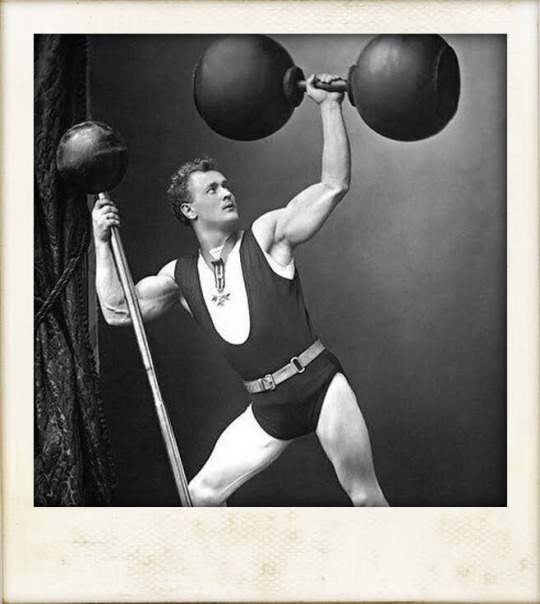
The inner life of Mike Johnson, Speaker of the House.
7 notes
·
View notes
Text
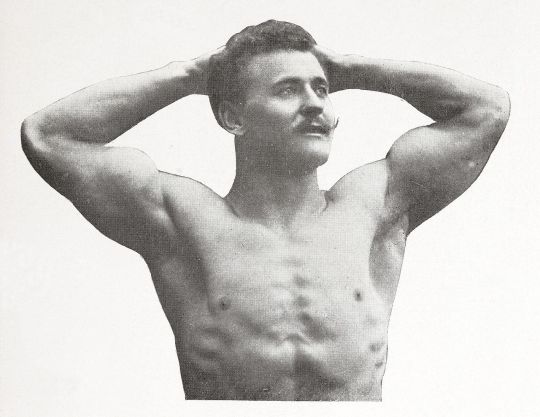
#Eugen Sandow#vintage#muscle#bodybuilder#handlebar mustache#black and white#photography#hands behind head#posing
9 notes
·
View notes
Video
youtube
Los INCREIBLES fisicos NATURALES de los titanes de la era de BRONCE
#youtube#era de bronce#eugen sandow#culturismo natural#culturismo#entrenamiento#nutricion#workout#home workout#calistenia
2 notes
·
View notes
Text
Eugene Sandow
Eugene Sandow, nascido Friederich Wilhelm Müller é considerado o pai da musculação e criador do fisiculturismo. Sandow era filho de pai alemão e mãe russa. Sua família era luterana e queria que ele se tornasse um ministro da religião.

1894
270 notes
·
View notes
Text
I like to think that Bronco Henry was a Sandow fan. :)
1 note
·
View note
Text

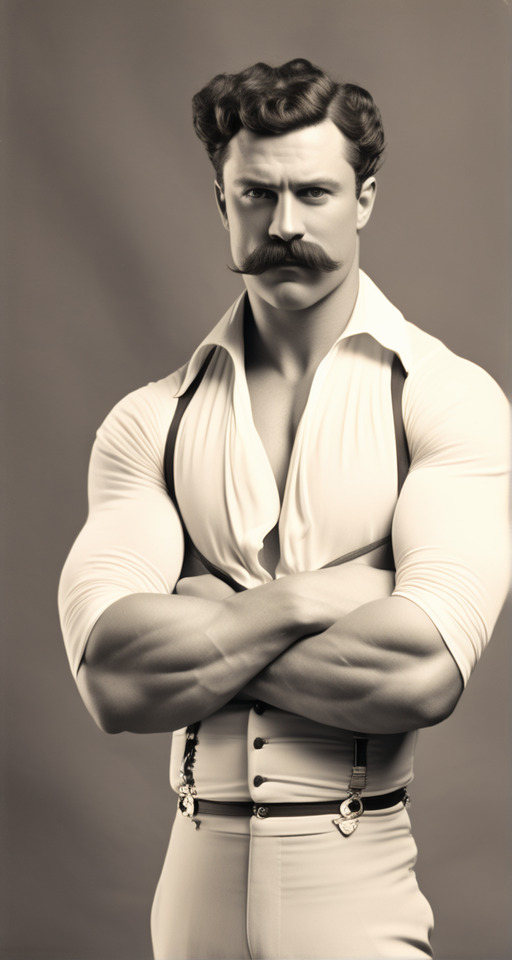
Playground AI
Vintage 1895 B&W full photo of Eugen Sandow, promoting his incredible physique, sinewy musculature. curled mustache, short curly hair, pale complexion, feats of strength, Vaudeville
1 note
·
View note
Text
Eugen Sandow
Eugen Sandow (nascido Friedrich Wilhelm Müller , alemão: [ˈfʁiːdʁɪç ˈvɪlhɛlm ˈmʏlɐ] ; 2 de abril de 1867 - 14 de outubro de 1925) foi um fisiculturista e showman alemão da Prússia . Ele nasceu em Königsberg e se interessou pelo fisiculturismo aos dez anos de idade durante uma visita à Itália.
Depois de um tempo no circo, Sandow estudou com o homem forte Ludwig Durlacher no final da década de 1880. Por recomendação de Durlacher, ele começou a entrar em competições de homem forte , atuando em lutas contra figuras importantes do esporte, como Charles Sampson, Frank Bienkowski e Henry McCann. Em 1901, ele organizou o que se acredita ser a primeira grande competição de fisiculturismo do mundo. Situado no Royal Albert Hall de Londres , Sandow julgou o evento ao lado do autor Sir Arthur Conan Doyle e do atleta/escultor Charles Lawes-Wittewronge . Sandow é conhecido como o "pai do fisiculturismo moderno".

Eugen Sandow
188 notes
·
View notes
Photo

(Eugen Sandow, in classical ancient Greco-Roman pose, c.1894 ) George Steckel
4 notes
·
View notes
Text

Trapeze artist, strongwoman, and all around badass Laverie Vallee, stage name Charmion, flexes for the camera in this (colorized) picture from around 1905. Born in 1875 in Sacramento, Charmion was a pioneer. She shocked conservative Victorian/Edwardian men with her daring "Trapeze Disrobing Act" (which was the subject of one of Thomas Edison's first films) and her insanely jacked body. But the ladies loved her, and her performances, which were viewed as practically pornographic by the extreme standards of the time period, were mostly attended by women. Throughout her career, she inspired women to exercise and to free themselves of the restrictions society placed on them. Charmion criticized the prudish attitudes of the time and told women they could be just as strong as men (this was a radical claim for that era, but her own body was the proof). A brilliant woman, she was fluent in six languages and regularly lectured and wrote newspaper articles about fitness. She was the highest-earning performer on the vaudeville circuit for much of her career, sometimes earning as much as $500 per week (equivalent to almost $20,000 today). Charmion was known to curl 70-pound dumbbells as part of her workout regimen and she could walk 12 miles without feeling fatigued. Charmion's biceps reportedly were almost exactly the same size as those of Eugen Sandow, who was widely considered the world's strongest man, and in a friendly sparring match she fought on an equal footing with the then-famous boxer Terry McGovern. She retired in 1912 and lived a quiet life outside the limelight until her death in 1949.
EDIT: I made a second post with some more info about Charmion if anyone's interested:
#history#feminist#fuck the patriarchy#victorian#edwardian era#women's history#women in history#gender roles#badass
1K notes
·
View notes
Text
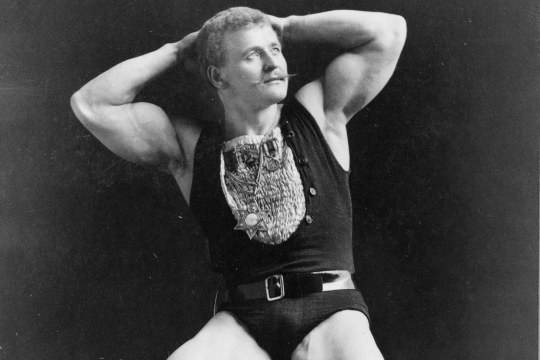
#Eugen Sandow#bodybuilder#vintage#black and white#photography#hands behind head#male body positivity
5 notes
·
View notes
Video
youtube
Cómo construían sus cuerpos los culturistas de la ERA de BRONCE
#youtube#culturisrmo#era de bronce#entrenamiento de la era de bronce#workout#entrenamiento#training#fit#fitness#culturismo natural#eugen sandow#gymlover#gymaddict#gymfit#gym
0 notes
Text
I can admit defeat by the Rhys faction 💚 I will continue to be quietly baffled and y'all can continue to see him as buff.
In my defense, my ex was way too into powerlifting and I have consumed probably too much strongman content, largely against my will. I never intended to know who Eugene Sandow was.
47 notes
·
View notes
Text

"Strong Man" (0001)
@kharnieval-blog, here is one iteration of a strong man for you. I'll see if I can generate something closer to Eugen Sandow's body type.
#ai man#ai generated#ai artwork#gay ai art#gay artwork#art direction#male bodybuilder#male physique#male figure#male form#bearded man#muscular#abdominals#dumbbell#physical culture
20 notes
·
View notes
Note
Considering superhero comics predate the invention of spandex, when did the idea that superhero costume are made from spandex come from?
Great question!

To answer this question, I first need to backup and do some history about fin-de-siècle strongmen and the origin of the "superhero costume" as a distinct cultural concept. In the late 19th/early 20th century, circus strongmen were not just huge draws but celebrities and cultural icons in their own right, part of the whole obsession of anxious masculinity in that era, along with the emergence of bodybuilding and quite a bit of racist eugenics (think "Passing of the Great Race" stuff) about how industrial civilization was making white men effete and degenerate and thus vulnerable to the Other.
However, the strongmen had something of a fashion problem: in order to do their shtick, they often wore close-fitting silk tights and shirts in order to show off their musculature, and these had a tendency to split when they were flexing. This could run the risk of leaving the strongmen hanging in the wind, as it were, so they adapted by putting on wrestler's unitards over their tights to keep themselves under wraps.

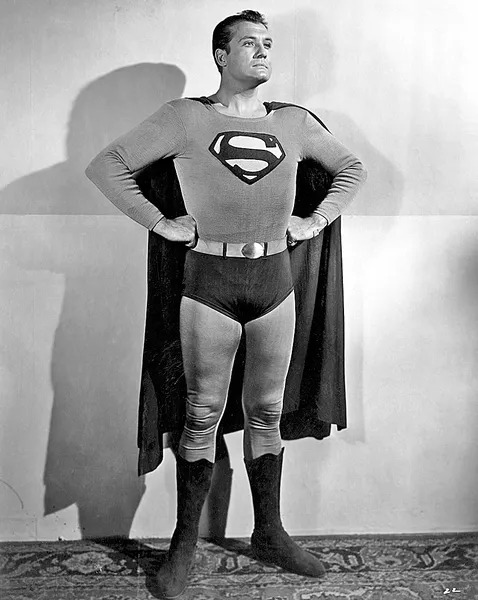
Throw on a cape, and you literally have the archetypal superhero costume. But if you take a look at how these costumes look on an actual human body, they're not literally skin-tight. You can see some muscle definition in places, but there's also visible wrinkles and folds at the joints and other places where you need more flexibility. It's just not quite there yet in terms of evoking the whole George Sandow aesthetique.
And then in 1958, spandex was invented as a much more elastic fabric that could be truly skintight without splitting, so you could really see the musculature much more clearly. Add this to the expanding and increasingly professionalized and advanced culture of postwar bodybuilding, and people's expectations about what their superheroes could and should look like began to change. Thus, starting in the Silver Age and into the Bronze Age, superheroes start to look a lot buffer and their costumes look a lot tighter so that the reader can see every damn muscle (and curve) on superheroes' bodies - because artists and editors and publishers realized they could make more money by making comics that were a bit sexier, thanks to the magic of "spandex."

Now this gets us into the economics of the comics industry and changing generational cohorts, but as we passed from the Silver Age to the late Bronze Age, you started to see a shift from comics artists who worked in comics because Jews and Catholics weren't welcome in the Art Departments of Madison Avenue, to comics artists who worked in comics because they had grown up reading comics and learned to draw from comics.

This had an impact on superhero costumes, because the older artists tended to be plugged in more to fashion and fashion art and thus drew superhero costumes as clothing with real three-dimensionality to it and the younger artists found it easier and faster to just draw familiar superhero bodies naked (with "spandex" as the figleaf) and then put in a few lines showing where the costumes end - and this easier and faster style that turned up the dial on allowable sexiness was more profitable for the companies.

Once you get to Jim Lee, Rob Liefeld, Todd McFarlane, and the other "Image Kids" of Nineties Comics, the spandex-ification of superhero comics had reached its peak because now the hot new trend was stuff that wouldn't work even with real-world spandex, hence the phenomena of the boob sock and the logical extension of the swimsuit/bikini for superwomen to the battle thong.
So ultimately it all comes down to the combined pressures of culture and economics.

#comics#comics meta#superhero costumes#silver age#bronze age#nineties comics#cultural history#superhero comics#marvel#dc#marvel meta#dc meta#image comics
91 notes
·
View notes
